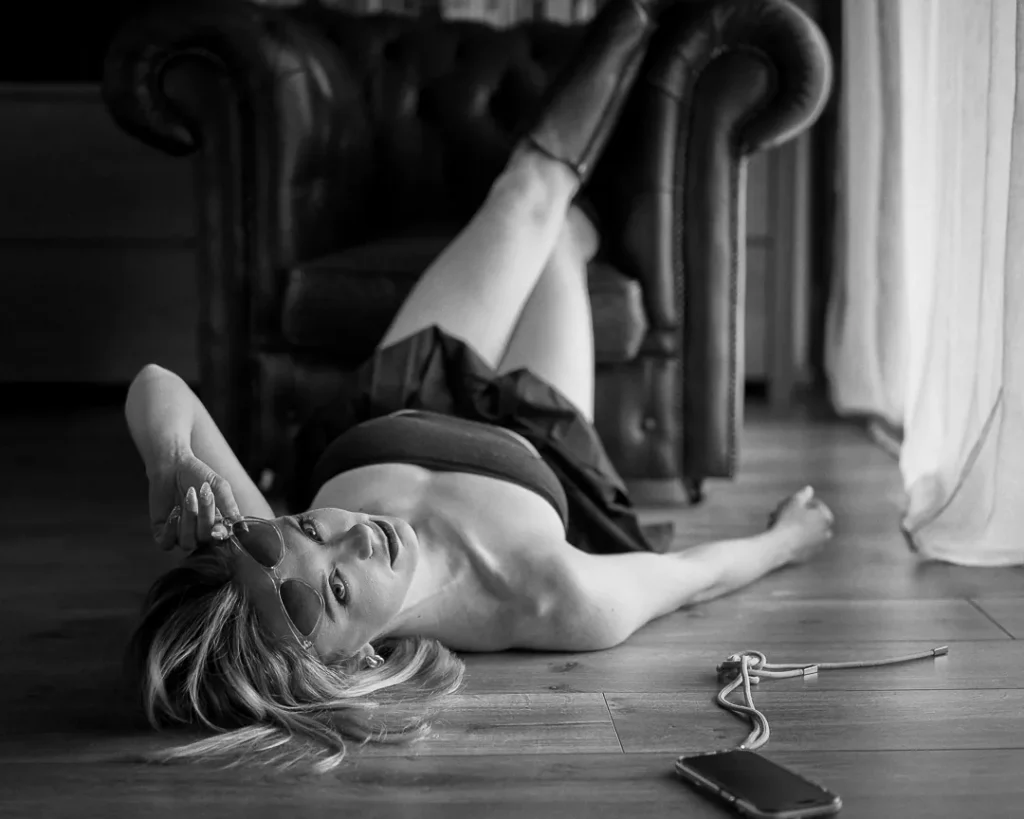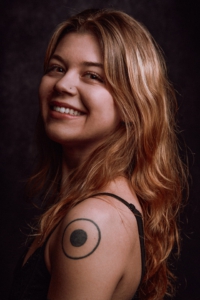
Clarifier les attentes pour de meilleures images
Thursday, October 9, 2025
Un portrait naît d’une rencontre. Entre ce que je vois et ce que la modèle souhaite voir d’elle. Parfois, ça fonctionne immédiatement. Parfois, il faut clarifier. C’est normal. Et c’est là que la collaboration prend tout son sens.
Ce que je cherche quand je photographie
Je ne cherche pas à valider une image attendue. J’essaie de capter un moment vrai: un regard qui se pose, une respiration, une mèche qui échappe à la perfection. La beauté, pour moi, n’est pas qu’une question de traits. Elle se joue dans la lumière, l’ombre, la relation au cadre. Une image me touche quand elle respire quelque chose d’authentique.
Ce que vit la modèle
La modèle arrive souvent avec des repères: les codes des réseaux, l’envie de se reconnaître et de se plaire. Rien de vain là-dedans. C’est humain. Le familier rassure. De mon côté, je propose parfois un pas de côté. Ce décalage peut surprendre. Il n’est pas un conflit. Il demande simplement d’être nommé et accompagné.
Le point sensible: sélectionner et retoucher
Après la séance, tout se joue dans la sélection. Quel que soit le nombre de prises, je ne garde que peu d’images. Celles qui portent une intention claire et que je peux assumer en retouche.
Retoucher une photo à laquelle je ne crois pas donne un résultat correct, mais sans relief. À l’inverse, quand l’image me parle, je peux y mettre du temps, de la précision et la faire aboutir.
Clarifier ce qu’est une collaboration TFP
Le TFP (Time For Portolio) n’est pas une commande au résultat. C’est une collaboration artistique dans un univers identifiable. Mon portfolio (Au 09-10-2025, plus de 200 photos postées sur mon compte Instagram et le présent site web) en donne le cadre. Entrer dans mon univers, c’est accepter une esthétique, un rythme, et une part d’inconnu.
Besoin d’un rendu précis, d’un cahier des charges, d’usages définis? C’est une commande. Un autre cadre, d’autres engagements. Les deux existent. Il suffit de choisir le bon.
Ma pratique aujourd’hui
Je privilégie la cohérence à l’exhaustivité. Je souhaite désormais choisir moi même et ne livrer que 5 à 10 images finales, celles que j’aime vraiment et dont je peux répondre, techniquement et artistiquement. Moins d’images, mais plus solides.
Pour que ce cadre soit clair et serein, je prépare davantage en amont:
- poser les intentions de la séance
- partager des références visuelles
- cadrer les usages des images
- expliciter ce qui n’est pas négociable (style, rendu, limites)
Mieux on se comprend avant, plus on s’accorde après. Ce n’est pas imposer une vision. C’est définir un terrain de jeu commun.
Conclusion
La collaboration en portrait n’est pas une négociation permanente. C’est une confiance partagée: ma liberté de créer, sa liberté d’être. On ne vient pas confirmer une image attendue. On vient ouvrir une possibilité.
Mon engagement: peu d’images, mais justes. Une préparation claire. Une retouche impliquée. Et quand tout se passe bien, on se découvre un peu autrement. On se reconnaît mieux.
Article recommandé Recommended Article
L'exploration comme signature
La photographie est naturellement perçue comme un art de la maîtrise, où la répétition forge l'excellence. Pourtant, c'est précisément cette voie balisée que je ne souhaite pas emprunter, moi qui ai découvert la photographie de portrait en studio il y a à peine dix mois.
Lire la suite Read moreClear expectations for better images
A portrait starts with a meeting. Between what I see and what the model hopes to see of herself. Sometimes it clicks right away. Sometimes we need to clarify. That’s normal. And that’s where collaboration truly matters.
What I look for when I photograph
I’m not trying to validate an expected image. I try to catch a true moment: a gaze settling, a breath, a stray lock that escapes perfection. Beauty, for me, isn’t just about features. It lives in light and shadow, in how the subject relates to the frame. An image moves me when it breathes something authentic.
What the model experiences
The model often arrives with references: social codes, the wish to recognize herself and to like what she sees. There’s nothing vain about that. It’s human. The familiar reassures. On my side, I sometimes suggest a small step aside. That shift can be surprising. It’s not a conflict. It just needs to be named and supported.
The delicate part: selecting and retouching
After the session, everything comes down to the selection.No matter how many photos we take, I pick through them myself and only keep a few. The ones with a clear intention that I can stand behind in retouching.
Retouching a photo I don’t believe in produces something correct, but flat. When the image speaks to me, I can invest time and precision and take it all the way.
Clarifying what a TFP collaboration is
TFP (Time For Portfolio) is not a results-based commission. It’s an artistic collaboration within a recognizable universe. My portfolio (As of 10/09/2025, over 200 photos posted on my Instagram and website) sets the frame. Entering my world means accepting an aesthetic, a pace, and a share of the unknown.
Need a precise deliverable, a detailed brief, defined usage? That’s a commission. A different framework, different commitments. Both exist. We just choose the right one.
How I work today
I value coherence over exhaustiveness. I now aim to deliver only 5 to 10 final images—the ones I truly love and can stand behind, technically and artistically. Fewer images, but stronger ones.
To keep this framework clear and calm, I prepare more upfront:
- set the session’s intentions
- share visual references
- define image usage
- spell out what’s non-negotiable (style, rendering, limits)
The better we understand each other before, the easier it is after. It’s not about imposing a vision. It’s about defining common ground.
Conclusion
Portrait collaboration isn’t a permanent negotiation. It’s shared trust: my freedom to create, her freedom to be. We’re not here to confirm an expected image. We’re here to open a possibility.
My commitment: fewer images, but the right ones. Clear preparation. Involved retouching. And when everything goes well, we discover ourselves a little differently. We recognize ourselves better.
